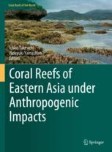Search
Search Results
-
Species traits and latitude mediate bird responses to forest edges globally
ContextAlthough local studies comparing species abundance between forest edges and interiors are common, general patterns in the response of...

-
Herbivore effects increase with latitude across the extent of a foundational seagrass
Climate change is altering the functioning of foundational ecosystems. While the direct effects of warming are expected to influence individual...

-
Global arthropod beta-diversity is spatially and temporally structured by latitude
Global biodiversity gradients are generally expected to reflect greater species replacement closer to the equator. However, empirical validation of...

-
Latitude, altitude and human disturbance drive changes in the diet of Geoffroy’s cat
Mammalian carnivores exert direct and indirect effects on communities through top-down control and trophic ecology studies are helpful to understand...

-
Water column-based assays underestimate benthic predation pressure in mid-latitude systems
Non-indigenous species (NIS) establish and thrive on floating artificial substrata along mid-latitude shores, which might serve as propagule...

-
The effect of elevation, latitude, and plant richness on robustness of pollination networks at a global scale
Plant-pollinator interactions play a vital role in the maintenance of biodiversity and ecosystem function. Geographical variation in environmental...

-
Post-fire forest recovery at high latitudes: tree regeneration dominated by fire-adapted, early-seral species increases with latitude
Key messageAbove 40° N/S, increasing latitude is linked to greater post-fire tree regeneration. However, species dominance shifts from conifers to...

-
Variation of Fruit Characteristics and Antioxidant Properties Among Ten Apple Cultivars Grown in Two Different High-Latitude Regions of South Korea
Nowadays, climate changes are forcing the optimal region for apple cultivation in Korea to shift from low-latitude regions to high latitude regions....

-
Regional impacts of warming on biodiversity and biomass in high latitude stream ecosystems across the Northern Hemisphere
Warming can have profound impacts on ecological communities. However, explorations of how differences in biogeography and productivity might reshape...

-
The effect of temperature and invasive alien predator on genetic and phenotypic variation in the damselfly Ischnura elegans: cross-latitude comparison
BackgroundUnderstanding and predicting how organisms respond to human-caused environmental changes has become a major concern in conservation...

-
Co-infection with Leucocytozoon and Other Haemosporidian Parasites Increases with Latitude and Altitude in New World Bird Communities
Establishing how environmental gradients and host ecology drive spatial variation in infection rates and diversity of pathogenic organisms is one of...

-
Jeju Island: a sentinel for tracking ocean warming impacts on high-latitude benthic communities
As climate changes and anthropogenic pressures increase, marine ecosystem assembly and functioning are altered. High-latitude areas may provide...

-
Acclimation of circadian rhythms in woodland strawberries (Fragaria vesca L.) to Arctic and mid-latitude photoperiods
BackgroundThough many abiotic factors are constantly changing, the photoperiod is a predictable factor that enables plants to time many physiological...

-
Succession and Emergence of Corals in High-Latitude (Temperate) Areas of Eastern Asia into the Future
High-latitude areas have been hypothesized as potential refugia in the future for those corals which can range-shift across the latitudes (from...
-
Evidence of corallivorous gastropod Drupella cornus breeding on the higher latitude reefs of Rottnest Island (32°S), Western Australia
With increasing sea water temperatures, higher latitude temperate and sub-tropical coral reefs are becoming increasingly tropicalised. Although these...

-
Estimating blue mussel (Mytilus edulis) connectivity and settlement capacity in mid-latitude fjord regions
The mussel industry faces challenges such as low and inconsistent levels of larvae settlement and poor-quality spat, leading to variable production....

-
Geolocation of a demersal fish (Pacific cod) in a high-latitude island chain (Aleutian Islands, Alaska)
BackgroundFish geolocation methods are most effective when they are customized to account for species behavior and study area characteristics. Here,...

-
Body size variation in a tropical seabird along a latitude-productivity gradient
Body size can vary across geographical gradients, and these clines have been mainly attributed to temperature (i.e., the heat conservation...

-
Cloning, tissue distribution, mRNA expression and functional analysis of circadian clock gene per2 from the high-latitude Amur minnow (Phoxinus lagowskii)
Clock genes are essential for the daily functions of vertebrates and invertebrates and participate in a wide variety of biological functions...

-
Rice yield response to climate and price policy in high-latitude regions of China
Climate change has renewed interest in the production capacity of agriculture. Few researchers paid attention to price policy and heteroscedasticity...

